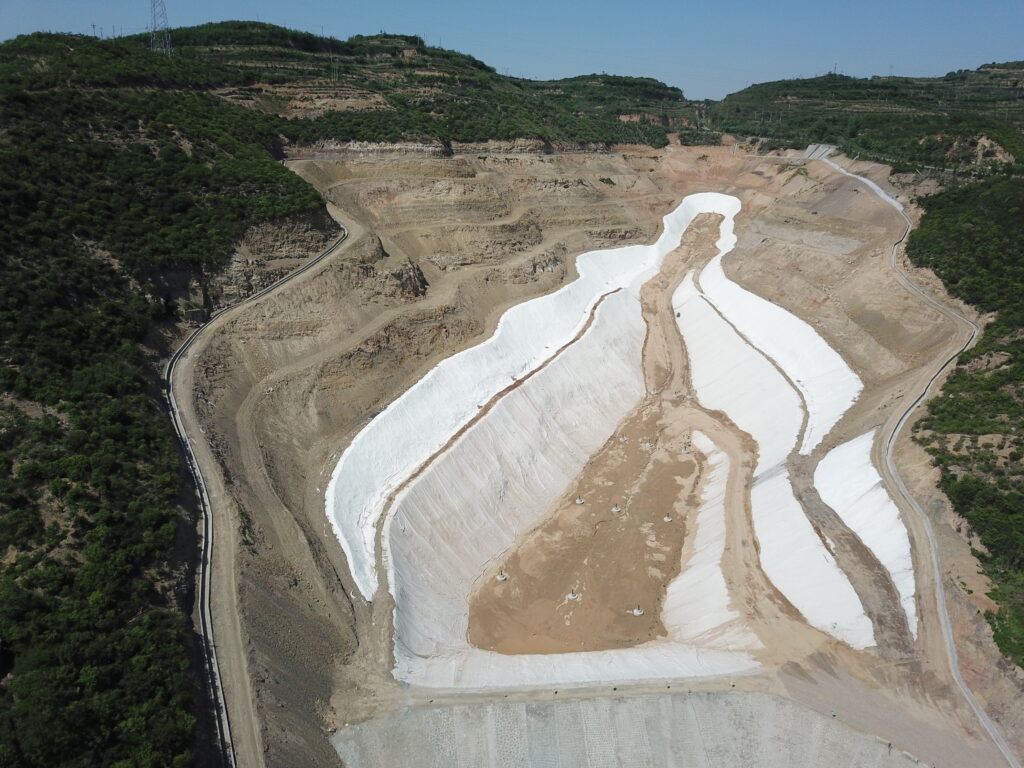Does the tailings pond need geotextiles?
In the construction of tailings ponds, the use of geotextiles is relatively common and can play an important role in some specific situations. Here are some situations in which tailings ponds may warrant consideration for geotextiles:
Prevention of Infiltration and Filtration: Tailings may contain fine particles and interstices, and particle loss and infiltration may occur when tailings come into contact with soil or other geological materials. Geotextiles can act as a filter layer, preventing fine particles from tailings from penetrating into the soil while allowing moisture to pass through.
Separation and reinforcement: There may be loose interfaces between the soil and the tailings in tailings ponds, creating instability and risk of infiltration. Geotextiles can be used to separate tailings and soil layers, preventing them from mixing, while increasing the stability and bearing capacity of the soil.
Prevent erosion: The soil mass on the surface of tailings ponds may be eroded by wind, water, and other environmental factors. Geotextiles can reduce the rate of soil erosion and protect the stability of the tailings pond surface.
Repair and reinforcement: For existing tailings ponds, geotextiles can be used for repair and reinforcement if there are cracks, leaks or other damage. It provides a waterproofing and support layer, restoring the structural integrity and stability of the tailings pond.
It should be noted that the use of geotextiles should be determined according to the specific tailings pond design, engineering requirements and environmental conditions. The size of the tailings pond, soil characteristics, geological conditions and risk of leakage will all affect the need to use geotextiles, and how to choose the appropriate type, specification and installation method. Therefore, in the design and construction of tailings ponds, detailed engineering planning, geological survey and material selection should be carried out, and professional engineers and technicians should be relied on to provide guidance to ensure the correct application and performance of geotextiles to achieve the expected results.

How to install geotextiles in the tailings pond?
Preparation:
Determine the type, specification and quantity of geotextiles required according to the design requirements and the characteristics of the tailings pond.
Clean the surface of the tailings pond to ensure that the surface is smooth and clear of loose and sharp objects.
Laying geotextiles:
According to the design requirements, the geotextile roll is placed on the laying position and gradually unfolded to ensure that it covers the entire tailings pond surface and extends beyond the edge.
Make sure that the geotextile has no obvious wrinkles and voids during laying.
Fixed geotextile:
Fix the geotextile on the surface of the tailings pond with fixings (such as U-shaped ground, interface plate or nails). The fixing distance and method should be determined according to the design requirements and the characteristics of the geotextile.
The fixings should be properly distributed, usually fixed at the edge and central part of the geotextile to ensure the stability of the geotextile.
Join and cover edges:
If necessary, the geotextiles can be connected by hot-melt connection or special connection material. Make sure the connections are tight and provide an adequate seal.
Around the edges of the geotextile, a mulch treatment is performed. The edges of the geotextile are usually covered and secured with a filler such as earthfill.
Check and fix:
After the installation of the geotextile is completed, a comprehensive inspection is carried out to ensure the integrity of the geotextile and no broken parts.
If any damage or problem is found, repair it in time, and ensure that the repaired part is tightly bonded to the surrounding geotextile.
Please note that the method of installation of tailings pond geotextiles may vary depending on project requirements, the type and characteristics of the geotextile, and the characteristics of the tailings pond. Therefore, in actual construction, it is recommended to cooperate with professional engineers, construction teams or relevant technical personnel, and follow relevant technical specifications and suggestions. They can provide detailed guidance on a case-by-case basis to ensure proper installation and performance of the geotextile as expected.

